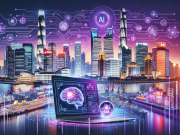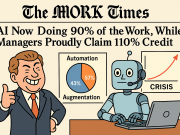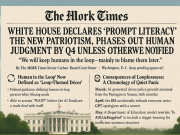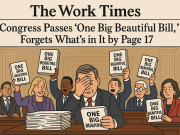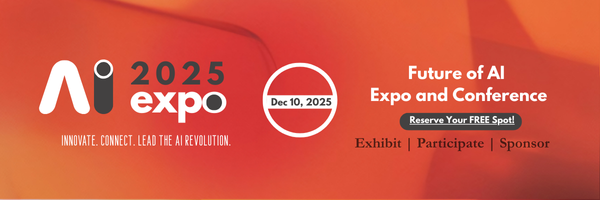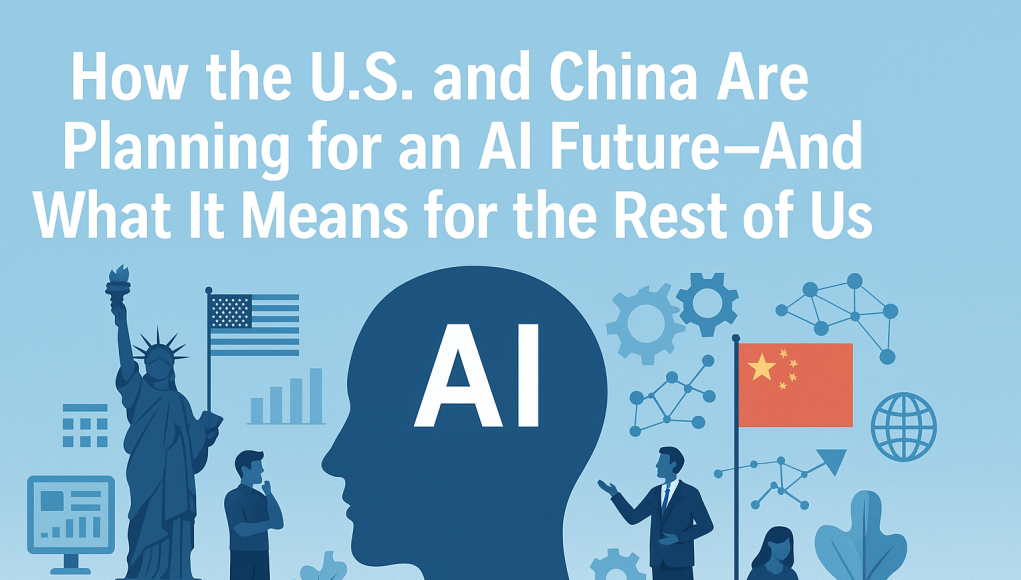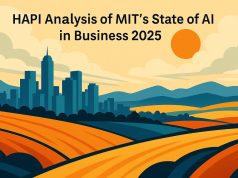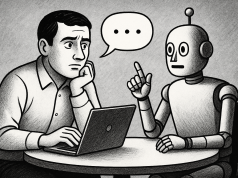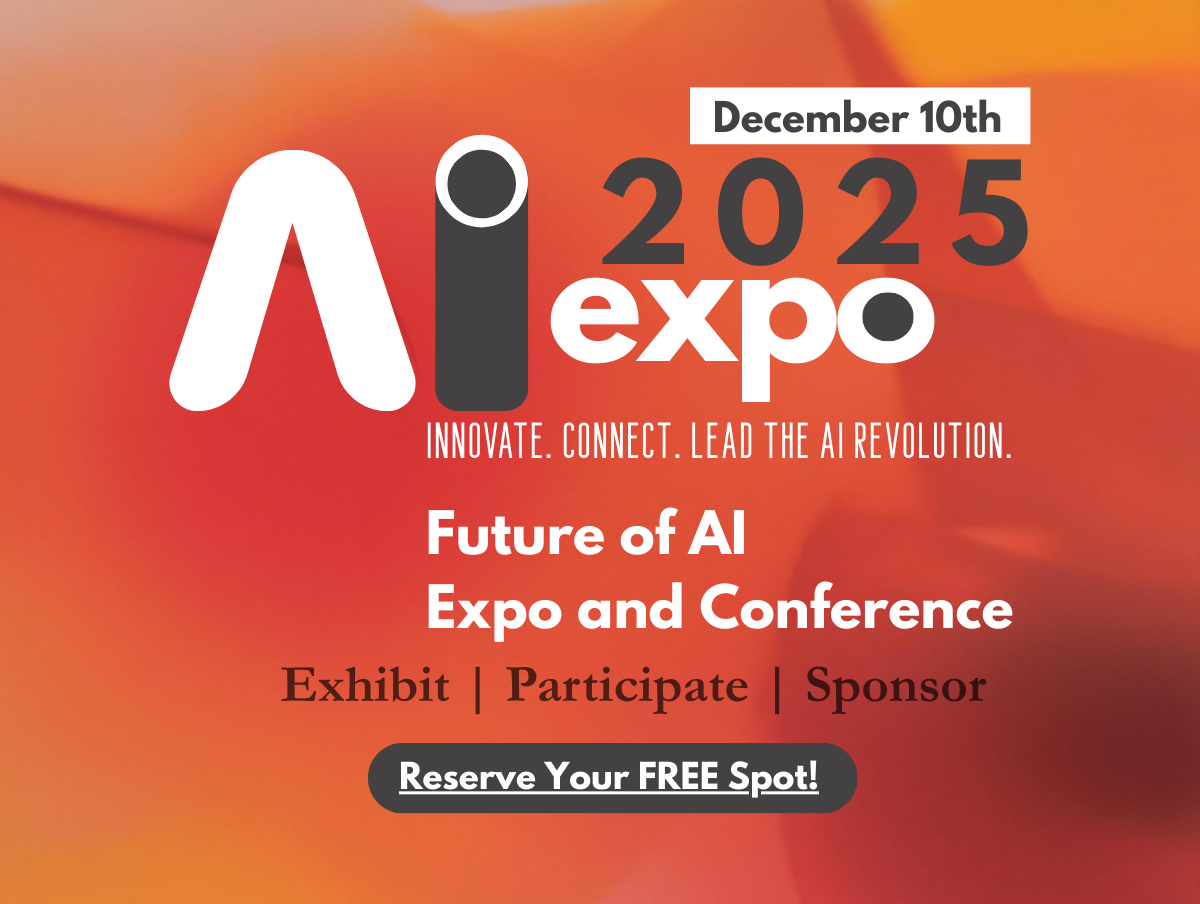Blueprints for Tomorrow: Why Every Nation Needs an AI Action Plan
In the Beginning, There Was the Framework
Long before the pyramids were built, the ancient Egyptians left behind not just stone, but systems—rituals, work routines, protocols. It wasn’t the bricks that built civilization. It was the blueprint.
In the AI age, we too stand on the cusp of a monumental transformation. But unlike stone, AI reshapes the world invisibly—shifting industries, job roles, educational needs, and the very definition of productivity.
And yet, very few countries have a national action plan to navigate it.
Why Action Plans Matter
AI is not a technology. It’s a tidal shift. And every nation must choose:
- Will it ride the wave with strategy?
- Or be pulled under by reaction?
An AI Action Plan is not about asserting dominance or building gadgets. It’s about ensuring that workers are protected, businesses are empowered, and governments are not left guessing in the face of algorithmic change.
Think of it as a digital constitution—a living document that reflects a country’s economic philosophy, social priorities, and long-term vision for its people.
Key Reasons Every Country Needs One
- To Safeguard Human Dignity Without policy, AI displaces without direction. Action plans ensure that transitions are humane, guided, and include retraining, emotional support, and lifelong learning.
- To Harness Productivity AI can 10x output. But only if infrastructure, incentives, and adoption roadmaps are in place. Plans align industries around shared goals.
- To Avoid Fragmentation Without national coordination, cities, states, and firms build competing frameworks—draining resources and confusing standards.
- To Participate in Global Governance A seat at the global AI table requires having your house in order. Plans show readiness, ethics, and technological maturity.
What the U.S. and China Are Doing Right
In July 2025, both nations took bold steps—releasing ambitious action plans with distinct worldviews.
United States: Infrastructure & Innovation
- Focused on deregulation, upskilling, open models, and scientific acceleration.
- Emphasizes workforce retraining, tax incentives, and private-sector empowerment.
- Strong in compute access, retraining pilots, and AI adoption across defense, healthcare, and manufacturing.
China: Diplomacy & Governance
- Emphasizes multilateral AI governance, global cooperation, and universal access.
- Proposes a global AI framework, inclusive development, and capacity building for the Global South.
- Embraces open-source technology sharing and public good framing of AI.
Both countries recognize the stakes: productivity, security, and equity in the AI century.
The Call to Action: Don’t Wait
Every country—from economic giants to emerging economies—must now answer:
- How will we protect our workers?
- How will we regulate algorithms ethically?
- How will we position ourselves in global AI diplomacy?
Because in the AI era, it’s not the biggest who thrive—it’s the most adaptable. And adaptation begins with a plan.
East vs. West: What AI Action Plans Reveal About National Philosophies
AI Doesn’t Just Reflect Intelligence—It Reveals Intent
Centuries ago, Confucius said, “To govern is to rectify. If you lead by correcting yourself, others will follow.” Across the ocean, Thomas Jefferson once wrote, “Laws and institutions must go hand in hand with the progress of the human mind.”
Different eras. Different cultures. But both understood something timeless: how a nation governs its future reveals how it sees its people.
In 2025, two giants—the United States and China—unveiled their national AI strategies. Both are deeply strategic. Both are globally consequential. And yet, they couldn’t be more different in tone, focus, and philosophical DNA.
This isn’t just about policy mechanics. It’s about national identity.
Philosophy 1: The U.S. – Frontier First, Worker Second
The U.S. AI Action Plan is a battle cry for innovation supremacy. It positions AI as a catalyst for economic reinvention, military readiness, and scientific acceleration.
Core Philosophy: Let the private sector build. The government clears the runway.
What It Prioritizes:
- Deregulation: Removing bureaucratic red tape, overturning previous executive orders, and emphasizing a free-market approach.
- Innovation Infrastructure: Investment in compute access, open-source tools, AI Centers of Excellence, and rapid tech deployment.
- Workforce Transition: Acknowledgement of disruption, with concrete plans for retraining, apprenticeships, and tax-incentivized skill building.
- Decentralized Execution: Federal funding tied to state-level AI friendliness—using incentives rather than mandates.
What It Believes:
- The future will be won by speed and scale.
- The best innovation happens in the private sector.
- Government should remove obstacles, not steer direction.
Philosophy 2: China – Harmony Through Structure
The China Global AI Governance Plan is not a domestic playbook. It’s a global invitation. But it reveals a deeply Confucian worldview: structure ensures harmony; consensus guides technology.
Core Philosophy: AI is a shared future. Governance precedes deployment.
What It Prioritizes:
- Multilateral Governance: A global framework for AI rules, with cooperation across the Global South and developing nations.
- Public Good Positioning: AI should benefit humanity, not just shareholders. China offers its tools and expertise as international aid.
- Risk-Aware Language: A strong emphasis on safety, control, and “human harnessing of AI” to avoid dystopia or chaos.
- Central Coordination: Calls for the creation of a global AI cooperation organization led through structured diplomacy.
What It Believes:
- AI must be governed before it is unleashed.
- Technology should not outpace ethics or consensus.
- National success is tied to global stewardship.
Narrative Contrast: Competition vs. Cooperation
The U.S. narrative is Darwinian—adapt fast, dominate faster. It leans heavily on frontier language: winning, dominating, leading the race. It evokes Silicon Valley’s speed-driven ethos, where innovation often precedes regulation.
The Chinese narrative is more diplomatic and future-facing. It frames AI not as a national weapon, but as a tool for soft power and mutual uplift. It’s less about disruption, and more about continuity—ensuring AI evolves within controllable bounds.
Worker-Centric vs. Worker-Inclusive
While both plans acknowledge workers, their approaches diverge.
- U.S.: Treats workers as adaptable assets in a fast-moving economic machine. The plan proposes retraining and upskilling initiatives, but the dominant theme is “don’t slow the machine.”
- China: Speaks about universal access and global equity, especially for developing countries. Domestically, however, the language is abstract—offering fewer specifics on reskilling or internal labor transition.
Both recognize the human cost of AI.
Neither fully addresses the emotional and social scaffolding workers need to transition with dignity and agency.
The Tension Beneath the Strategy
- The U.S. plan risks fragmentation—with different states pulling in different directions, private firms optimizing for profit over equity, and a top-speed approach that may outrun its own oversight.
- The China plan risks overcentralization—where governance frameworks slow innovation or stifle flexibility under the weight of consensus.
One bets on speed. The other on structure.
But in an adaptive world, the answer might be neither.
Closing Reflection: Strategy is Biography
In the end, every policy is a mirror. The U.S. sees AI as a force to channel through entrepreneurial energy. China sees AI as a phenomenon to align through harmony and statecraft.
But beneath the tech talk and strategy papers, we must ask:
- What kind of future are these blueprints building?
- Who is empowered to shape it?
- And will the people—those far from conference podiums—be ready?
Measuring Mindsets: A HAPI Gap Analysis of U.S. and China’s AI Blueprints
You Can’t Win the Future Without Measuring Readiness
In AI governance, what gets measured shapes what gets prioritized. But most nations still rely on tech outputs—patents filed, chips designed, startups funded.
HAPI—the Human Adaptability and Potential Index—challenges that mindset. It asks not what we’ve built, but how well we’ll adapt. It scores systems across five categories: Cognitive, Emotional, Behavioral, Social Adaptability, and Growth Potential.
In this blog, we pit the U.S. and China’s AI action plans against each other—not to determine a winner, but to spot the gaps that could determine who thrives.
1. Cognitive Adaptability
- U.S. Score: 13/15
- China Score: 11/15
The U.S. excels with policy agility—regulatory sandboxes, pilot programs, and open innovation hubs that allow for rapid feedback. It’s an adaptive thinker: fast, curious, and willing to prototype governance in real time.
China scores well for its strategic vision. Its push for a global governance framework and rule-based international order suggests deep cognitive framing. But it’s more deliberate than dynamic—strong in structure, slower in revision.
Insight: The U.S. leads in real-time adaptability. China leads in strategic stability. Both could benefit from the other’s approach.
2. Emotional Adaptability
- U.S. Score: 9/15
- China Score: 10/15
The U.S. addresses disruption clearly—via retraining, youth education, and tax incentives for upskilling—but it lacks emotional depth. There’s no real investment in mental wellness, psychological safety, or community resilience.
China earns a modest edge here. Its rhetoric is more emotionally calibrated—positioning AI as a tool “to be harnessed by humans,” promoting balance and control. But even this is tone over infrastructure; the plan lacks action on emotional resilience for domestic workers.
Insight: Both nations need to build systems that support people’s emotional transitions—not just their technical ones.
3. Behavioral Adaptability
- U.S. Score: 12/15
- China Score: 10/15
America takes this round with behavioral incentives that work: tax credits for companies investing in AI skills, flexible funding for AI-friendly states, and Centers of Excellence promoting cultural change.
China’s plan, while strong on external diplomacy, offers few concrete behavior-change mechanisms internally. There’s little on how government workers, educators, or business leaders will shift daily practices.
Insight: The U.S. knows how to nudge behavior. China knows how to coordinate intent. But changing systems requires both carrots and culture.
4. Social Adaptability
- U.S. Score: 8/15
- China Score: 13/15
This is China’s strongest category.
It frames AI as a global public good, promotes inclusion of the Global South, and pushes for a multilateral AI governance framework—prioritizing connection, cooperation, and trust.
The U.S., in contrast, stays domestic. While open-source collaboration and academic partnerships exist, there’s little emphasis on inclusion, diversity, or international empathy.
Insight: Social adaptability wins wars of trust. China is thinking like a diplomat; the U.S. is thinking like a developer.
5. Growth Potential
- U.S. Score: 33/40
- China Score: 28/40
The U.S. plan shines here: robust investment in AI infrastructure, lifelong learning pathways, national scientific computing, and talent pipelines from high school to R&D.
China’s strength is its international posture—AI for all, especially the Global South. But it’s less clear on how it’s future-proofing its own workforce or reforming internal educational systems.
Insight: America’s growth is institutional and industrial. China’s is relational and diplomatic. Both are important—but scale requires rooted systems.
Conclusion: A Tale of Two Futures
The U.S. builds like a startup: fast, experimental, and ambitious. China moves like a statecraft scholar: structured, stable, and global.
Yet both miss the same blind spots—emotional support, inclusion, and long-term adaptability metrics.
If these gaps remain unfilled, their AI leadership may build towers that wobble when the ground inevitably shifts.
Because the future won’t belong to the fastest or the firmest—but to the most resilient, the most human-centered, and the most adaptable.
The Overlap and the Omissions: What the U.S. and China Both Got Right—and Missed—in Their AI Visions
When Giants Think Alike
In 1854, British physician John Snow traced a deadly cholera outbreak to a contaminated water pump. His insight didn’t just stop a disease—it birthed a field: epidemiology. But here’s the irony: his biggest breakthrough wasn’t what he discovered. It was what everyone else failed to see.
Today, as the U.S. and China unveil sweeping AI strategies, the same principle applies.
These are visionary documents—ambitious, assertive, global in scope. But when viewed through the lens of HAPI—Human Adaptability and Potential—it becomes clear: some of their best moves lie in common ground. And their biggest risks? In what both ignore.
Let’s break it down.
Where They Converge: Shared Wins
1. AI as Strategic Infrastructure
Both countries recognize that AI is not an app or a widget. It’s infrastructure—as fundamental as highways and electricity once were. Their plans commit to:
- Funding compute resources and data centers.
- Creating AI innovation hubs and sandboxes.
- Building national AI research ecosystems.
This isn’t just smart. It’s survival.
2. Workforce Awareness
Neither country pretends AI won’t displace jobs. Both mention:
- Reskilling and upskilling initiatives.
- The role of education in AI-readiness.
- Creating incentives for industry participation.
The tone may differ—America leans technical, China leans diplomatic—but the concern is mutual.
3. Global Positioning
Each nation sees AI as a geopolitical lever:
- The U.S. champions democratic values, innovation supremacy, and open markets.
- China proposes a multilateral framework, open-source sharing, and capacity building for the Global South.
They’re playing different symphonies—but to the same beat.
Where They Both Missed the Mark
1. The Emotional Core Is Missing
AI disrupts not just tasks—but identities. Yet both plans treat humans like nodes in a system:
- Training is framed as economic input, not personal transformation.
- There’s little mention of mental health, burnout, or emotional scaffolding for disrupted communities.
Neither plan asks: What does it feel like to be automated out of your livelihood?
2. Inclusion Is Sidelined
Neither blueprint explicitly tackles:
- Digital inequality across race, gender, and geography.
- The role of community-driven AI development.
- Bias mitigation beyond technical fairness.
In a world where algorithms can encode prejudice, this silence is costly.
3. No Long-Term Adaptability Metrics
We count models. We count patents. But neither plan defines how we’ll measure human adaptability over time. Where’s the index for:
- Workforce resilience?
- Learning agility?
- Emotional health in transition?
Without metrics, policy becomes performance.
What a Joint AI Doctrine Could Look Like
Imagine blending the best of both plans:
- U.S. speed + China’s structural diplomacy.
- American innovation incentives + Chinese multilateral frameworks.
- National infrastructure + global empathy.
This wouldn’t just be a power move. It would be a planetary one.
Because the real challenge isn’t who leads AI.
It’s whether humanity, as a collective, is prepared to thrive alongside it.
Final Reflection: Toward a Truly HAPI Future
The U.S. and China are on different roads—but both are headed toward an AI-driven reality that will reshape labor, trust, and what it means to thrive.
If they continue in parallel, we get faster models and deeper divides.
But if they converge—even quietly—we might just build a world where technology elevates, rather than replaces, human potential.
Because in the end, the future belongs not to the cleverest machine or the loudest policy.
It belongs to the most adaptable community.


